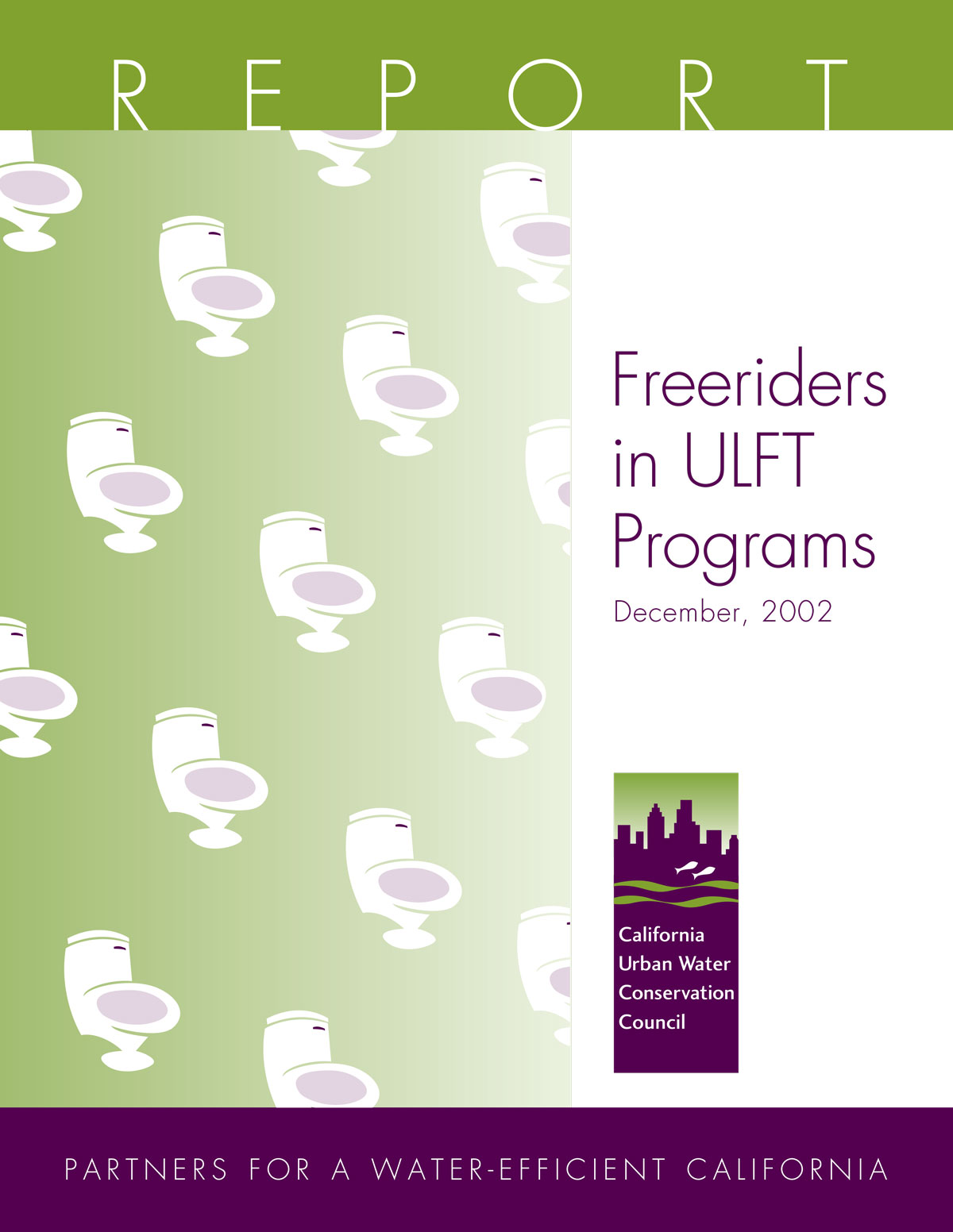By California Urban Water Conservation Council
The California Urban Water Conservation Council decided to study the issue of free riders in
ultra-low-flush toilet programs for several important reasons. Outlining those reasons is useful
to understanding the study’s intent and findings.
First, our approved list of Best Management Practices includes an ultra-low-flush toilet (ULFT)
replacement program where such a program is cost-effective for the water supplier. In
determining cost-effectiveness, examination of costs and loss of benefits associated with “free
riders” to the program must be considered, and sound empirical estimates of free ridership to
date had not been published.
Second, our water supplier membership desired advice on the design of their ULFT retrofit
programs, and including design elements that would minimize free ridership in those programs
would obviously be desirable.
Finally, it was clear that research on this topic was needed, and with the Council’s ten-year
history of conducting research and evaluating water conservation savings and costs, it seemed
natural that we should undertake such a study. The study design was approved by the
Research and Evaluation Committee of the Council, and data sets were drawn from Council
member agency programs. Grant funding was obtained from the U.S. Bureau of Reclamation to
offset the costs of the year-long research effort.
Now that the study is complete, there are several points to keep in mind. The ULFT programs
examined in the study were “mature” programs – that is, they had been in existence for many
years before this study began. None of the sample data sets included new programs just
beginning or with only three or less years of operation. Hence, the levels of free ridership
documented in this study must be necessarily interpreted as levels appropriate to mature
programs, where presumably customers have a long-standing knowledge of the existence of
the program.
Another point to consider is that the level of free ridership is a cost to a ULFT program that still
might be outweighed by high benefits – it all depends upon the program. This study illuminates
for the first time the range associated with that free rider cost – but individual program benefits
vary and each program must be evaluated on its own merits. A blanket statement that ULFT
replacement programs are unworthy because of inherent high free rider rates is NOT a
conclusion supported by this study.
But the most important point I would like to emphasize is that the study provides information on
how to design a ULFT retrofit program in order to minimize that free rider potential. As such, we
believe that the study is a meaningful contribution to the evolving body of water conservation
literature and a highly valuable conservation program design tool.
Mary Ann Dickinson
Executive Director
California Urban Water Conservation Council
December 2002

